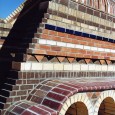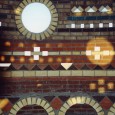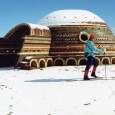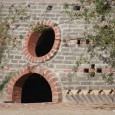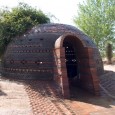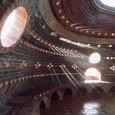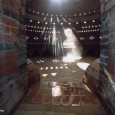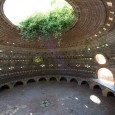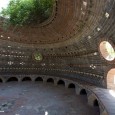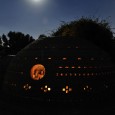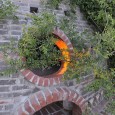Description
"Jalaloddin Mohammed Balkhi Rumi" and more popularly simply as "Rumi" (30 September 1207 - 17 December 1273), was an Iranian (Persian) poet, Faqih, Islamic scholar, theologian, and Sufi mystic originally from Greater Khorasan [Note 1]. He was born in September 1207 in the city of Balkh, (today’s Afghanistan), a city in Khorasan province, part of the Persian empire (Iran today). His mausoleum is located in Konya, Turkey. Rumi's mother tongue was Persian (Farsi).
Nader Khalili and Rumi
For 25 years, Nader Khalili’s specialty as an architect was skyscrapers. Then at thirty-eight, his turning point in life, he “… bought a motorcycle and went to the desert for five years in Iran to see what the solution was for sheltering the poor in the world and to learn from what already existed. There [he] got to know five personalities: earth, water, air, fire and Rumi, the 800 year old Persian mystic poet...." Rumi taught him the unity of these universal elements, forming his "Archemy" - architecture and alchemy. Water is fire, earth is water, and there is a unity in all elements.
In Rumi, Dancing the Flame, Khalili wrote, “I have also discovered, dealing with these universal elements for my own earth-and-fire architecture, that Rumi, more than any other individual has dealt with fire and water, or earth and wind, and yet no one to my knowledge has looked at Rumi’s life and works through these elements. I have been blessed by making my life’s work following this narrow stream springing form the ocean that is Rumi.”
In addition to his revolutionary earth architecture and Superadobe techniques, a great part of his life’s work was translating Rumi’s Rubaiyat and Diwan-i Shams-i Tabrizi. “In the last seven hundred years many millions have lit their candles from Rumi’s fire and I feel I am one of them—awake or dreaming.”
Nader Khalili’s Dreams of Rumi
“Rumi’s poems, in Persian, have been whispered in my ears for over fifty years. The endless ocean of his sixty-five thousand couplet-verses have blessed my own creative work, letting me search for fire in its tranquil waters for two decades. And I have been graced by his visit in my dreams which bestowed on me enough courage to enter his words:
In my dream Rumi is standing in the street, next to the curb, with several companions. The young and jovial Rumi, is about twenty-eight, round-faced, with a full head of curlicue hair. He is wearing a blue-grey suit and wearing a white shirt with the last button undone, and is a firm, healthy five-foot-five, looking younger than his age. His smile is surely the most striking feature o his physical presence. A smile brimming with quest, humbleness, victory, needlessness, and love.
I smile at him. I am standing on the sidewalk, desperately wanting to go forward and meet him, but the man next to him is my enemy. This man is young Rumi’s guide for the tour of our city. He is the only man I have known in my life who hates me as much as I once hated him. Thus my meeting Rumi seems impossible. Until seconds late, when in my dream I declare to my heart and God that I am ready to go and beg my enemy’s pardon, just so that I can have a chance to meet Rumi. No sooner do I make this wish than I find Rumi sitting next to me.
We are kneeling next to a low table, on adjoining sides, and looking at a large paper filled with Persian calligraphy. All along I keep looking at his face, at his smile, and feel more at ease in my body and soul. I lower my head with shyness and say:
“These are your poems. I have calligraphed all my favorite ones on this paper.”
He looks at them for a long time, then takes the pen from my hand, and right in the middle of the paper, over a couple of the Persian words adds three or four missing dots. He then smiles and says, “Ah, these poems!”
I look at him, smile, and say, “But the verse I love the best is not here.”
“What verse is that ?”
“Aab kam ju teshnegi aavar bedast | seek not water, seek thirst.”
He smiles and says, “That one is my favorite one too.”
And I wake up.
Note 1) Greater Khorasan comprised the present territories of northeastern Iran, parts of Afghanistan and much of Central Asia. The province was often subdivided into four quarters. Nishapur (present-day Iran), Marv (present-day Turkmenistan), Herat and Balkh (present-day Afghanistan) were the centers, respectively, of the westernmost, northernmost, southernmost, and easternmost quarters.
(Source: Minorsky, V. (1938). Geographical Factors in Persian Art. Bulletin of the School of Oriental Studies, University of London, 621-652.)
References:
1) Rumi, Cal Earth Institute [ → ]
